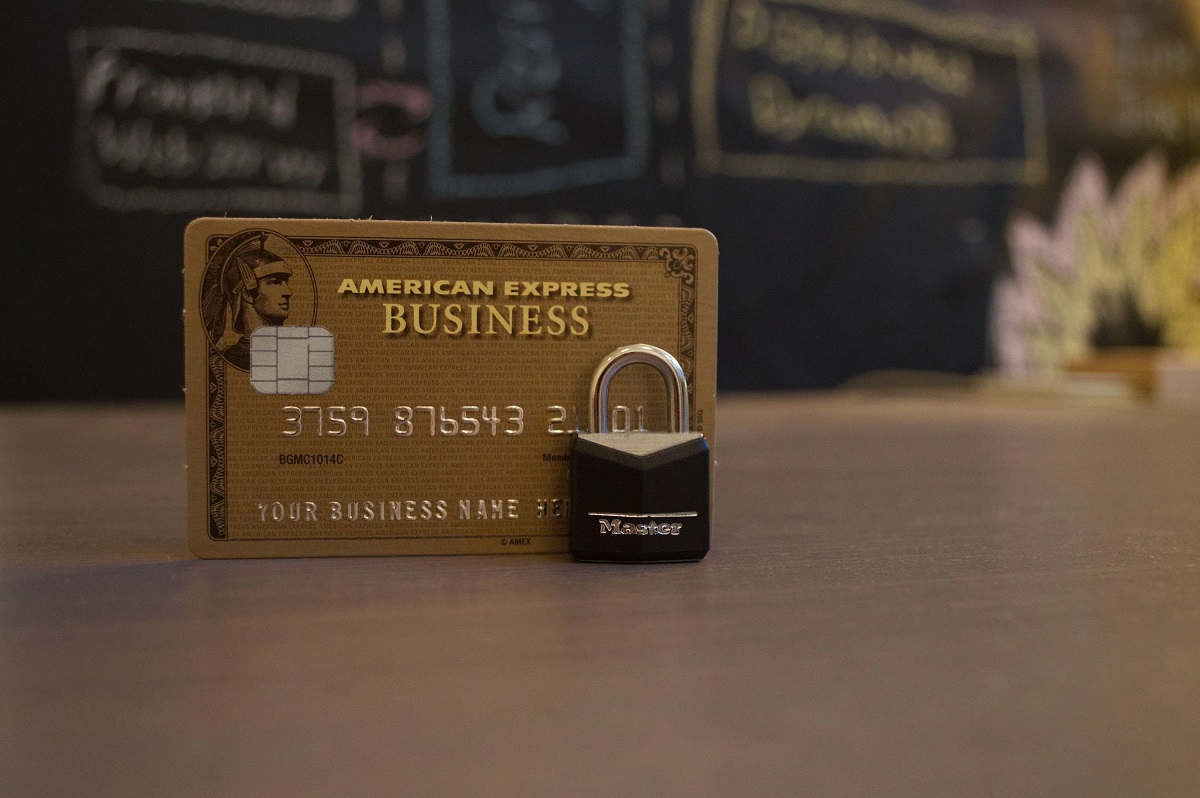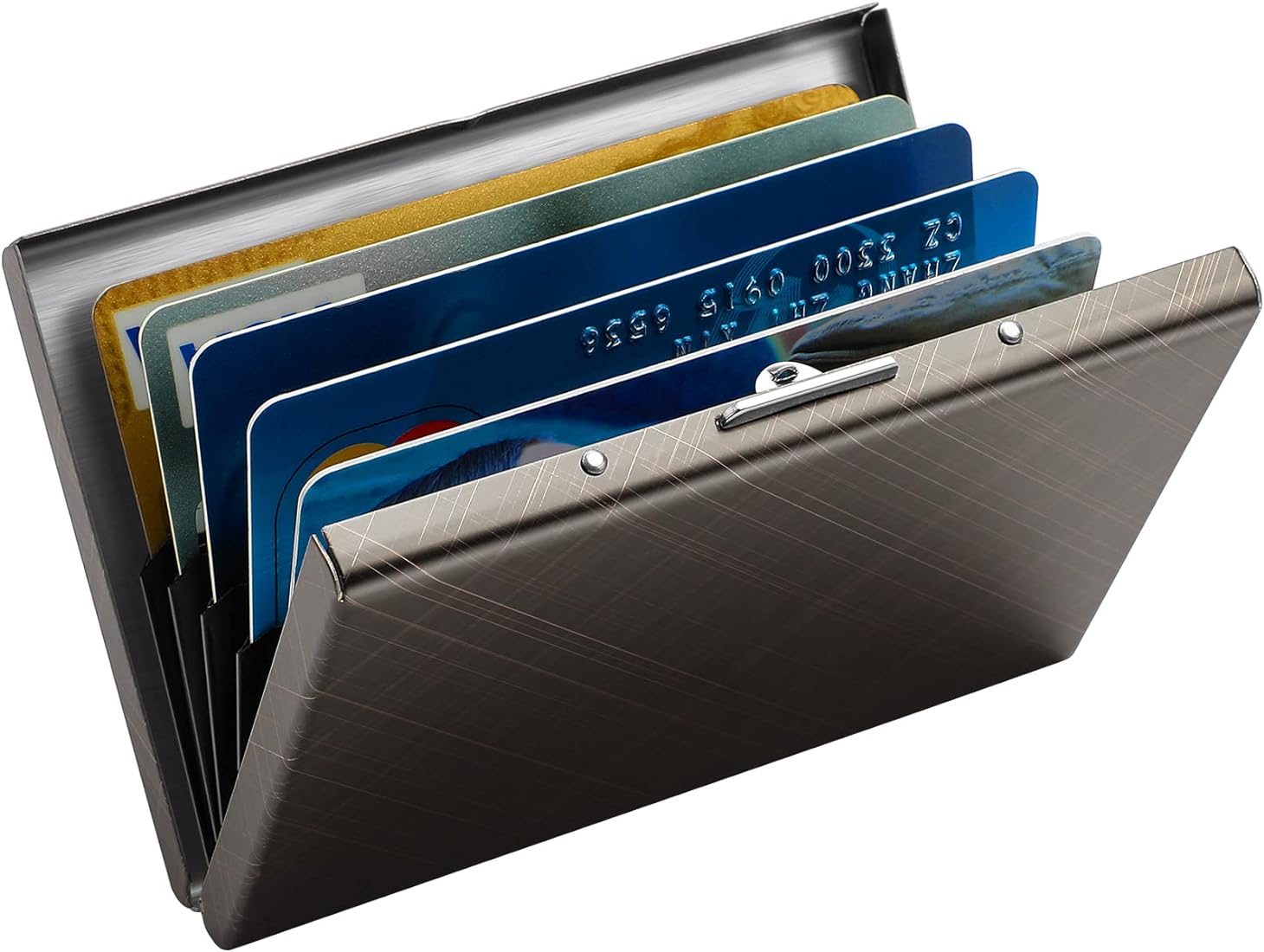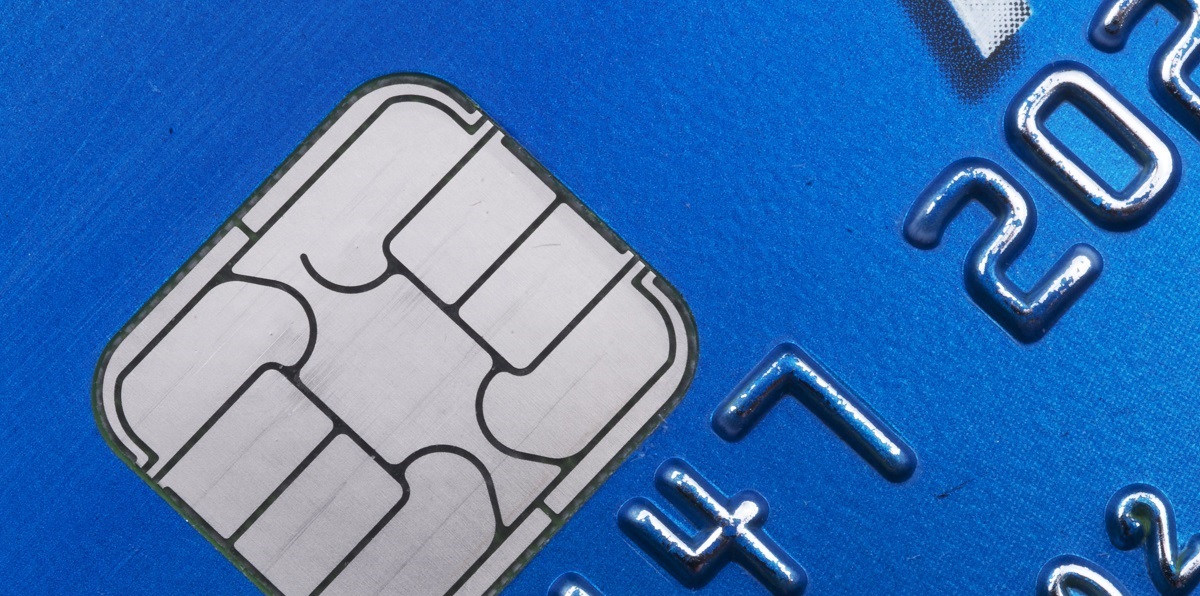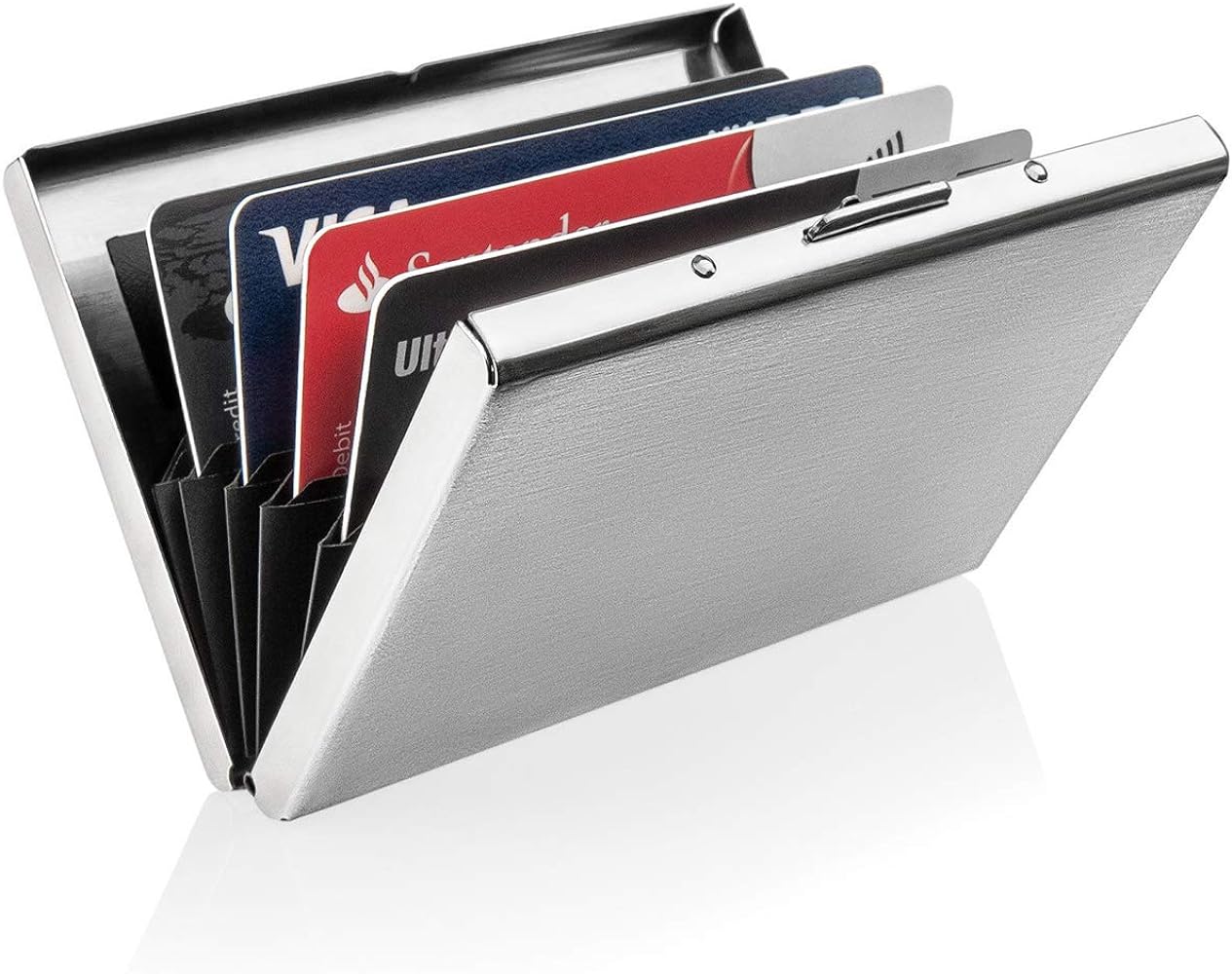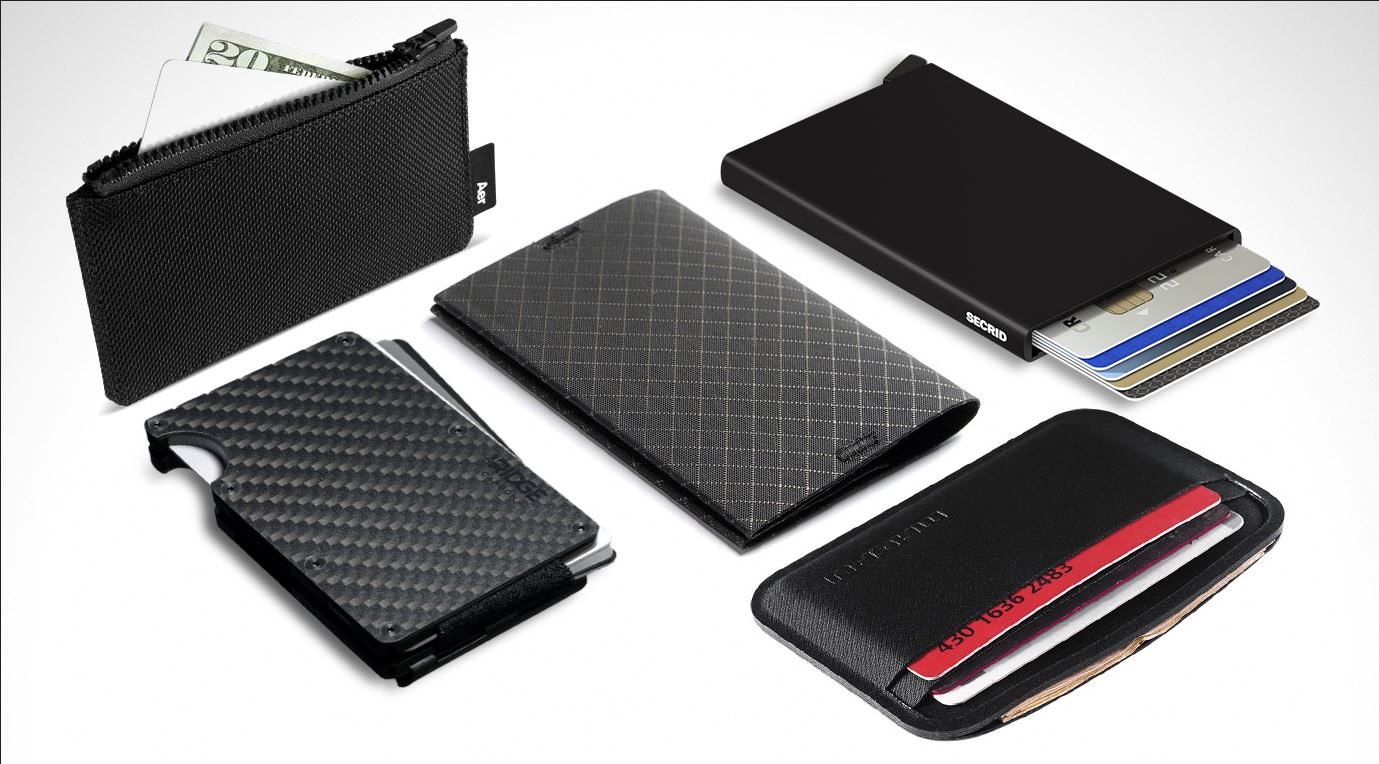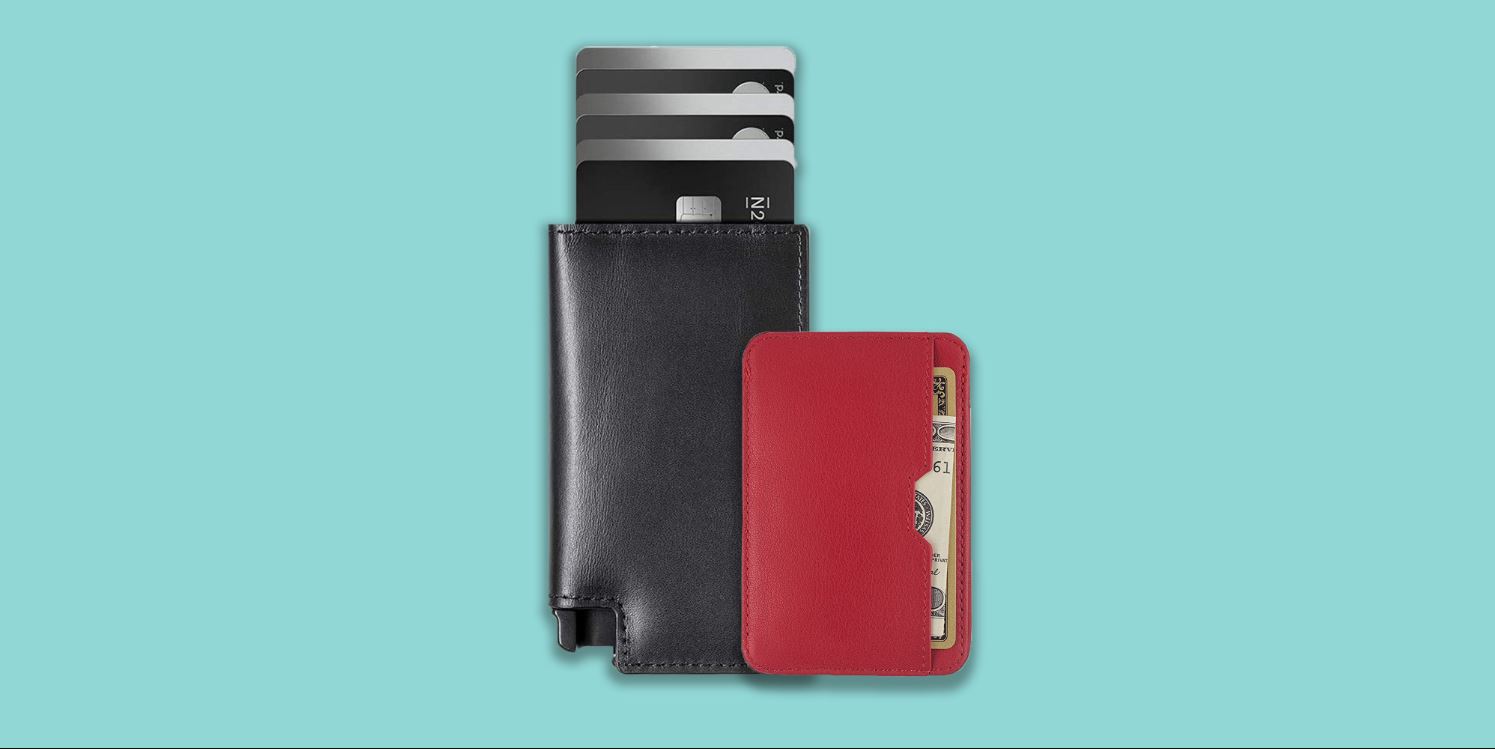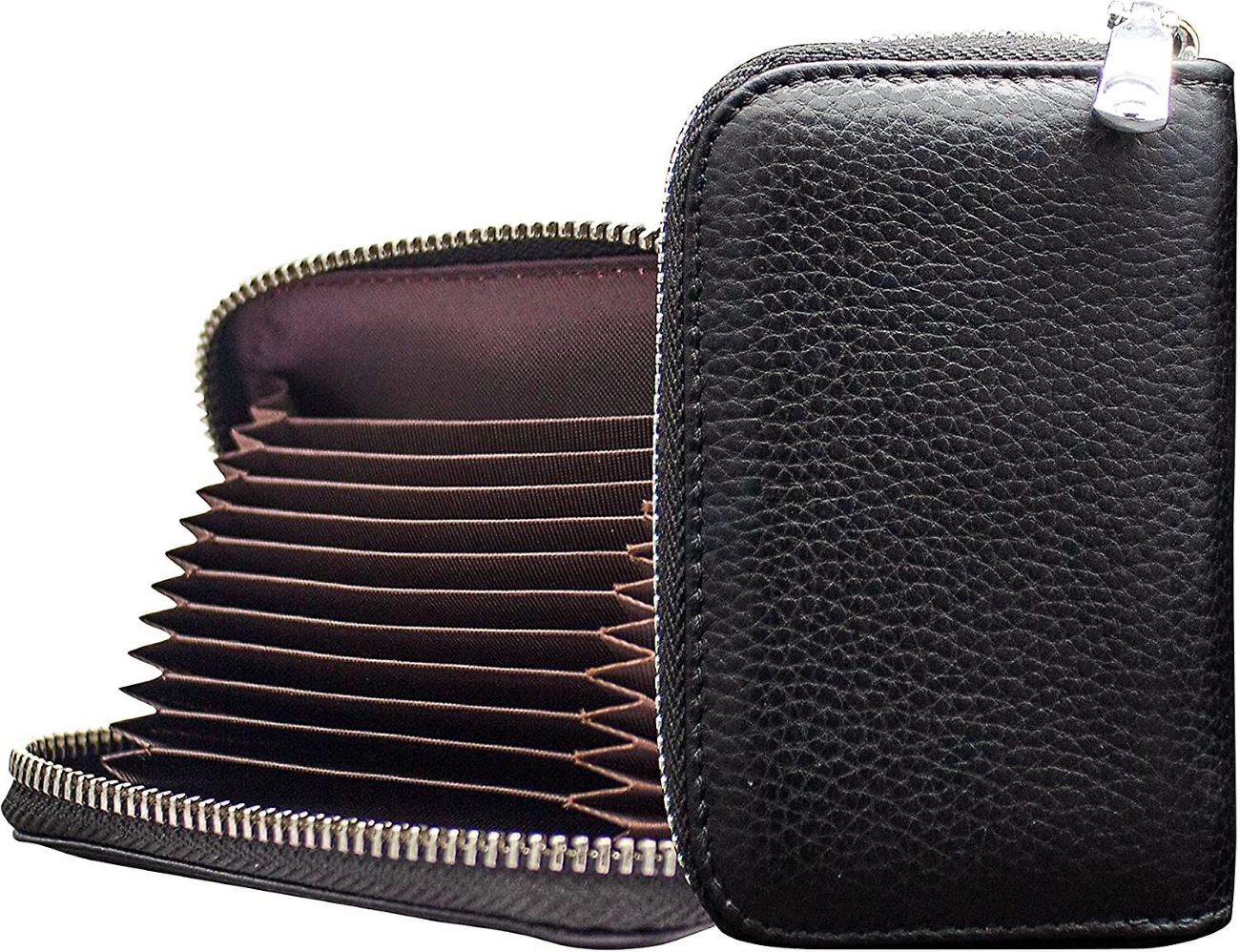Introduction
Welcome to the digital age, where convenience and innovation intersect. One of the advancements in the field of banking and finance is the introduction of RFID (Radio Frequency Identification) technology in credit cards. While this technology offers a range of benefits, it also brings potential risks that consumers should be aware of.
RFID is a wireless communication technology that enables data transfer between devices using radio waves. In the case of credit cards, RFID-enabled chips are embedded in the card, allowing contactless payments by simply tapping the card on a compatible reader. This eliminates the need to swipe or insert the card into a payment terminal, making transactions faster and more convenient.
However, like any technology, RFID has its drawbacks. One of the main concerns is the risk of unauthorized scanning, also known as RFID skimming. This occurs when criminals use specialized devices to read and capture the information stored on RFID-enabled credit cards without physical contact. This information can then be used for fraudulent activities, such as cloning the card or making unauthorized transactions.
It is important for credit card holders to be aware of the potential risks associated with RFID technology and take necessary precautions to protect their personal and financial information. This article will explore the risks of RFID-enabled credit cards, common misconceptions, and provide practical tips on how to safeguard your credit cards from RFID scanning.
What is RFID?
RFID, short for Radio Frequency Identification, is a wireless communication technology that allows data transfer between devices using radio waves. It is widely used in various industries for tracking and identification purposes, including inventory management, supply chain logistics, and access control systems.
In the case of credit cards, RFID technology is used to enable contactless payments. Instead of swiping or inserting the card into a payment terminal, RFID-enabled credit cards have a small chip embedded in them that communicates with a compatible RFID reader. This allows for quick and convenient transactions by simply tapping the card on the reader.
RFID technology operates on different frequency bands, including low frequency (LF), high frequency (HF), and ultra-high frequency (UHF). Each frequency band has its own range and functionality, with HF being the most commonly used in credit card applications.
HF RFID technology uses electromagnetic coupling to transfer data between the credit card and the reader. The card’s RFID chip contains a unique identifier and other information stored in its memory. When the card is brought close to an RFID reader, the reader emits radio waves that power the card’s chip and initiate communication. The card then transmits its data back to the reader, allowing the transaction to be processed.
One of the primary advantages of RFID technology in credit cards is its speed and convenience. Users can simply tap their cards on the reader without the need for physical contact or authentication, making it faster and more efficient than traditional payment methods. Additionally, RFID-enabled credit cards can also be integrated into mobile wallets and wearable devices, further enhancing convenience and accessibility.
While RFID technology offers numerous benefits for consumers and businesses alike, it is important to be aware of the potential security risks associated with its usage. In the following sections, we will examine the potential risks of RFID-enabled credit cards and discuss effective ways to protect your personal and financial information from unauthorized scanning.
How do credit cards with RFID work?
Credit cards with RFID technology have a small chip embedded in them that allows for contactless payments. This chip contains an antenna and a microchip that stores the card’s information. When the card is brought close to an RFID reader, the chip is powered by the reader’s radio waves, allowing it to transmit the necessary data to complete the transaction.
When you tap or wave your RFID-enabled credit card near an RFID reader, the following steps occur:
- The RFID reader emits radio waves, creating an electromagnetic field.
- The antenna within the credit card picks up the energy from the electromagnetic field.
- The microchip within the credit card’s RFID chip is powered up by this energy.
- The RFID chip communicates with the reader by sending the necessary data, such as card number and expiration date.
- The reader captures and processes the data sent by the RFID chip.
- The transaction is authorized, and the payment is completed.
This contactless payment process is designed to be fast, convenient, and efficient. It eliminates the need to swipe or insert the card into a payment terminal, reducing the time spent at the point of sale. It is especially popular in environments where speed is crucial, such as public transportation systems or busy retail stores.
However, it is important to note that RFID-enabled credit cards can only be used for contactless payments at locations equipped with RFID readers. Not all merchants have implemented this technology, so it is essential to check for the presence of the RFID symbol or look for contactless payment acceptance signs before attempting to use your RFID-enabled credit card.
It is worth mentioning that the specifics of how credit cards with RFID work may vary slightly depending on the issuing bank or card provider. Different technologies may be utilized, such as Near Field Communication (NFC), which is a form of RFID that allows for secure communication between devices over short distances.
Now that we have a better understanding of how RFID-enabled credit cards function, let’s explore the potential risks associated with this technology and how you can protect yourself from them.
The risks of RFID-enabled credit cards
While RFID-enabled credit cards offer convenience and speed, they also come with potential risks that consumers should be aware of. The main concern is the risk of unauthorized scanning, also known as RFID skimming. This occurs when criminals use specialized devices to capture the information stored on RFID-enabled credit cards without physical contact.
The information that can be accessed through RFID skimming includes the cardholder’s name, credit card number, expiration date, and other sensitive data. With this information, criminals can clone the card, make unauthorized purchases, and even steal the cardholder’s identity.
Another risk associated with RFID-enabled credit cards is relay attacks. In a relay attack, criminals use two devices – one near the cardholder and one near the payment terminal – to capture the information from the card and transmit it wirelessly to complete fraudulent transactions. This type of attack can be carried out without the cardholder’s knowledge, as the transaction appears to be legitimate.
Additionally, RFID-enabled credit cards may be vulnerable to data breaches or hacking. As with any technology that stores personal and financial information, there is always a risk of unauthorized access by cybercriminals. While the industry implements various security measures to protect against such attacks, it is crucial for consumers to remain vigilant and take steps to mitigate the risks.
It is important to note that the chances of falling victim to RFID skimming or other RFID-related crimes are relatively low compared to other forms of credit card fraud. However, it is always better to be proactive and take preventive measures to ensure the safety of your personal and financial information.
In the next section, we will explore how to identify if your credit card has RFID technology and debunk common myths and misconceptions related to RFID protection.
Signs that your credit card has RFID technology
Identifying whether your credit card has RFID technology is essential for understanding the potential security risks and taking appropriate measures to protect your personal and financial information. Here are some signs that your credit card is equipped with RFID:
- RFID symbol: Look for the contactless payment symbol on your credit card. This symbol consists of four curved lines, depicting the transmission of radio waves, and looks similar to a Wi-Fi signal symbol. It indicates that your credit card has RFID technology and is capable of contactless payments.
- Contactless payment acceptance signs: Merchants that accept contactless payments often display signs or stickers at the point of sale. These signs may include the contactless payment symbol or text indicating that contactless payments are accepted. If you see these signs, it is an indication that your credit card can be used for contactless transactions.
- User manual or issuer’s website: If you are unsure whether your credit card has RFID technology, refer to the user manual provided by the issuer or visit their website. The user manual or the issuer’s website may mention the presence of RFID technology or provide information on how to use the contactless payment feature.
- Contactless payment functionality: Attempt to make a contactless payment using your credit card. Instead of swiping or inserting the card, hold it near the payment terminal and check if the transaction goes through. If the payment is processed without requiring physical contact, it indicates that your credit card is equipped with RFID technology.
It is important to note that not all credit cards have RFID technology. While contactless payments are becoming more common, some credit card companies may still issue cards without RFID functionality. If you do not see any of the signs mentioned above and are unsure about your card’s capabilities, it is recommended to contact your credit card issuer directly for clarification.
Now that you are aware of the signs that indicate whether your credit card has RFID technology, it is time to debunk common myths and misconceptions related to RFID protection.
Common myths and misconceptions about RFID protection
With the rise of RFID technology, several myths and misconceptions have emerged regarding the protection of RFID-enabled credit cards. It is important to separate fact from fiction to make informed decisions about protecting your personal and financial information. Here are some common myths and misconceptions about RFID protection:
- Myth 1: RFID-blocking wallets are unnecessary: One of the prevailing myths is that RFID-blocking wallets or card sleeves are unnecessary and do not provide any added security. While it is true that not all RFID-enabled credit cards are vulnerable to unauthorized scanning, investing in an RFID-blocking wallet or sleeve can provide an extra layer of protection and peace of mind.
- Myth 2: Aluminum foil can protect your credit cards: Some believe that wrapping their credit cards in aluminum foil can block RFID signals and protect them from unauthorized scanning. While aluminum foil can impede radio waves to some extent, it is not a foolproof method of RFID protection. Specialized RFID-blocking materials are designed to provide more reliable protection against RFID skimming.
- Myth 3: Disabling the RFID feature on your credit card is the only solution: Disabling the RFID feature on your credit card is an option for preventing contactless payments. However, it is important to note that disabling the RFID feature may also render your card unusable for other purposes or limit its functionality. Exploring alternative RFID protection methods, such as using RFID-blocking wallets or sleeves, can be a more convenient option.
- Myth 4: RFID protection is only necessary for high-risk individuals: Some individuals may assume that RFID protection is only necessary for high-risk individuals, such as frequent travelers or individuals living in crowded cities. The truth is that anyone using an RFID-enabled credit card can be a potential target for RFID skimming. It is always better to be proactive and take preventive measures to protect your personal and financial information.
- Myth 5: RFID technology is completely secure: While RFID technology has advanced in terms of security features, it is not immune to potential risks. Hackers and criminals are constantly finding new ways to exploit vulnerabilities and target RFID-enabled credit cards. It is essential to stay informed about the latest security practices and take appropriate measures to protect your information.
By dispelling these myths and misconceptions, you can make more informed decisions about RFID protection. In the following section, we will discuss effective ways to safeguard your credit cards from RFID scanning and unauthorized access.
How to protect your credit cards from RFID scanning
Giving your credit card the utmost protection against RFID scanning is crucial to safeguard your personal and financial information. Here are several effective ways to protect your credit cards from RFID scanning:
- Option 1: Use an RFID-blocking wallet or card sleeve: Investing in an RFID-blocking wallet or card sleeve is a practical solution. These products feature specialized materials that block RFID signals, preventing unauthorized scanning of your credit cards. Make sure to choose a reputable brand and verify that the product provides genuine RFID protection.
- Option 2: Wrap your credit cards in aluminum foil: Although not as reliable as RFID-blocking products, wrapping your credit cards in aluminum foil can provide a basic level of protection. Keep in mind that this method may be less convenient than using an RFID-blocking wallet or sleeve, as you will need to unwrap the card each time you wish to use it.
- Option 3: Disable the RFID feature on your credit cards: If you rarely or never use the contactless payment feature on your credit cards, you may consider disabling the RFID functionality. Contact your credit card issuer to inquire about the process for disabling RFID. However, be aware that this option may limit the card’s functionality for other purposes, such as online transactions.
- Option 4: Use an RFID-blocking card or sticker: Another option is to use an RFID-blocking card or sticker. These thin cards or stickers are designed to be placed alongside your RFID-enabled credit cards. They work by creating a protective shield around your cards, blocking RFID signals and preventing unauthorized scanning.
- Option 5: Regularly check your credit card statements for suspicious activities: Stay vigilant and monitor your credit card statements regularly. Look for any unauthorized transactions or suspicious activities and report them to your credit card issuer immediately. Prompt action can help mitigate the potential impact of RFID skimming or other fraudulent activities.
While these options can help protect your credit cards from RFID scanning, it is important to remember that no method is foolproof. Maintaining good security practices, such as keeping your credit cards in a secure place and being cautious when providing your card information, are also vital for overall credit card protection.
By implementing these protective measures, you can significantly reduce the risk of RFID scanning and unauthorized access to your credit card information. Remember, proactive steps towards protecting your personal and financial information are always better than dealing with the aftermath of a security breach.
Option 1: Use an RFID-blocking wallet or card sleeve
One of the most effective ways to protect your credit cards from RFID scanning is to use an RFID-blocking wallet or card sleeve. These specially designed products are equipped with RFID-blocking technology that prevents unauthorized access to your credit card information.
An RFID-blocking wallet or card sleeve is made with materials that create a protective shield around your credit cards. These materials typically include layers of metal or conductive materials that block RFID signals from penetrating through to your cards. When your credit cards are placed inside the wallet or sleeve, they are effectively shielded from potential RFID skimming devices.
When choosing an RFID-blocking wallet or card sleeve, it’s important to select a reputable brand and ensure that the product provides genuine RFID protection. Look for products that have been independently tested and verified for their RFID-blocking capabilities. Reading customer reviews and checking for certifications can help you make an informed decision.
RFID-blocking wallets come in a variety of styles and sizes, ranging from traditional bi-fold or tri-fold wallets to cardholders and passport covers. Choose a design that suits your preferences and lifestyle. Many RFID-blocking wallets also offer additional features such as multiple card slots, ID windows, and compartments for cash and coins, providing both style and functionality.
An alternative to a full RFID-blocking wallet is an RFID-blocking card sleeve. These slim and lightweight sleeves can be individually placed around each credit card, providing individual protection without the need to replace your current wallet. This option is especially useful if you prefer to use a particular wallet but still want RFID protection for your credit cards.
Using an RFID-blocking wallet or card sleeve offers a convenient and reliable method to protect your credit cards from RFID scanning. Simply place your cards inside the wallet or sleeve, ensuring they are fully covered, and close it securely. This creates a powerful barrier against RFID skimming, giving you peace of mind when using your credit cards for contactless payments.
Remember to keep your RFID-blocking wallet or card sleeve in good condition. Over time, the RFID-blocking materials may wear out, reducing their effectiveness. If you notice any signs of wear or damage, consider replacing the wallet or sleeve to ensure continuous protection for your credit cards.
By utilizing an RFID-blocking wallet or card sleeve, you can significantly reduce the risk of unauthorized access to your credit card information and enhance the security of your financial transactions and personal data.
Option 2: Wrap your credit cards in aluminum foil
Another method to protect your credit cards from RFID scanning is to wrap them in aluminum foil. This simple and low-cost solution creates a barrier that can impede RFID signals from reaching your cards.
Aluminum foil is a conductive material that can block radio waves, including those used for RFID communication. By wrapping your credit cards in aluminum foil, you can create a makeshift RF shield that hinders unauthorized access to your card information.
To wrap your credit cards in aluminum foil, follow these steps:
- Take a piece of aluminum foil large enough to completely enclose your credit cards.
- Place your credit cards in the center of the foil.
- Fold the foil over the credit cards, ensuring that they are fully covered and no part is exposed.
- Gently press down on the foil to mold it around the cards and create a snug wrap.
Keep in mind that while aluminum foil can provide some level of protection, it may not be as effective as dedicated RFID-blocking products. The thickness and conductivity of the foil can vary, potentially impacting the level of protection it offers.
Additionally, wrapping your credit cards in aluminum foil may be less convenient than using an RFID-blocking wallet or card sleeve. Each time you need to use your credit card, you will need to unwrap it from the foil, which can be time-consuming and impractical.
It’s important to note that the effectiveness of aluminum foil as an RFID protection method may also depend on the strength and proximity of the RFID scanner. While it can provide a basic level of protection, more sophisticated RFID skimming devices may still be able to bypass the foil barrier.
If you choose to wrap your credit cards in aluminum foil, regularly inspect the foil for signs of wear or tears. Repeated folding and unfolding can cause the foil to weaken, potentially compromising its shielding capabilities. Replace the foil if you notice any damage or degradation.
While aluminum foil can serve as a temporary or makeshift solution, it is recommended to invest in a dedicated RFID-blocking wallet or card sleeve for more reliable and long-term protection against RFID scanning.
Remember, keeping your credit card information secure is essential, and taking proactive measures, such as using aluminum foil or RFID-blocking products, can help minimize the risk of unauthorized access to your personal and financial data.
Option 3: Disable the RFID feature on your credit cards
If you rarely or never use the contactless payment feature on your credit cards, another option to protect against RFID scanning is to disable the RFID functionality. By disabling the RFID feature, you can prevent your credit cards from being susceptible to unauthorized access through RFID skimming.
Disabling the RFID feature on your credit cards varies depending on the issuing bank and the specific card. Here are some common methods to disable the RFID functionality:
- Contact your credit card issuer: The first step is to contact your credit card issuer and inquire about the process of disabling RFID. They will provide you with the necessary guidance and instructions specific to your card. This may involve contacting their customer service department or visiting a branch in person.
- Website or mobile app option: Some credit card issuers provide the option to disable the RFID feature through their website or mobile app. Log in to your account, navigate to the card settings section, and look for RFID or contactless payment preferences. Follow the instructions to disable or deactivate the RFID functionality.
- Physical alteration: In some cases, you may need to physically alter the card to disable RFID. This can involve cutting or drilling a hole in the card’s RFID chip, rendering it non-functional. It is crucial to follow the issuer’s guidelines and exercise caution when making any physical modifications to your credit card.
- Request a non-RFID card: As an alternative, you can request a replacement card without RFID technology. Many credit card issuers offer traditional cards without contactless payment capabilities. Contact your issuer and inquire about the availability of non-RFID cards and the procedure to obtain one.
While disabling the RFID feature on your credit cards can effectively prevent unauthorized access through RFID scanning, it’s essential to consider the potential limitations and consequences. Disabling RFID may limit your ability to use contactless payments, which can be convenient in certain situations.
Before disabling RFID, assess your personal needs and weigh the convenience against the security risks. If you rarely use contactless payments or have concerns about RFID security, disabling the feature may be a suitable option for you.
It’s important to note that disabling RFID does not guarantee absolute protection against all forms of credit card fraud. Other security measures, such as safeguarding your physical card, monitoring your transactions, and protecting your personal information, should still be implemented.
Remember to contact your credit card issuer to understand their specific procedures and guidelines for disabling the RFID functionality. By taking proactive steps to protect your credit card information, you can enhance the security of your transactions and minimize the risk of unauthorized access.
Option 4: Use an RFID-blocking card or sticker
Using an RFID-blocking card or sticker is another effective option to protect your credit cards from RFID scanning. These thin and portable accessories are designed to create a protective shield around your cards, preventing unauthorized access to your sensitive information.
An RFID-blocking card or sticker is embedded with RFID-blocking technology, which consists of a specialized material that interferes with the radio frequency signals used for RFID communication. By placing an RFID-blocking card or sticker alongside your credit cards, you can create a shielding barrier that blocks RFID signals and prevents unauthorized scanning.
The process of using an RFID-blocking card or sticker is simple:
- Choose an RFID-blocking card or sticker that is compatible with your credit card size and design preferences.
- Place the RFID-blocking card or sticker alongside your credit cards in your wallet, cardholder, or other card storage solutions.
- Ensure that the RFID-blocking card or sticker is positioned to fully cover and shield your credit cards.
One advantage of RFID-blocking cards or stickers is their versatility and compatibility with any wallet or cardholder. They are slim and do not require a specific wallet design, allowing you to easily integrate them into your existing card storage setup.
RFID-blocking cards and stickers come in various designs and sizes to accommodate different card quantities and preferences. Some products have multiple compartments or slots to hold multiple credit cards, while others are designed to fit on a single card for easy removal and placement.
It’s crucial to choose an RFID-blocking card or sticker from a reputable brand that ensures effective RFID protection. Look for products that have been independently tested and verified for their RFID-blocking capabilities. Reading customer reviews and checking for certifications can help you make an informed decision.
Keep in mind that as with any RFID protection method, the effectiveness of RFID-blocking cards or stickers can vary depending on the specific product and the strength of the RFID scanner. However, they offer an additional layer of protection and peace of mind in preventing potential RFID skimming.
Regularly inspect your RFID-blocking cards or stickers for signs of wear or damage. Over time, repeated handling and exposure to external factors may impact their shielding capabilities. If you notice any deterioration or loss of effectiveness, consider replacing them to ensure continuous RFID protection.
By using RFID-blocking cards or stickers, you can enhance the security of your credit cards and minimize the risk of unauthorized access to your personal and financial information through RFID scanning.
Option 5: Regularly check your credit card statements for suspicious activities
One of the simplest yet crucial steps you can take to protect your credit cards from unauthorized access and fraudulent activities is to regularly check your credit card statements for any suspicious transactions or unusual activities. By monitoring your statements, you can quickly identify and report any unauthorized charges or potential instances of RFID scanning.
Here are some tips for effectively reviewing your credit card statements:
- Review statements as soon as they become available: Make it a habit to check your credit card statements as soon as they are accessible to you. This allows you to promptly identify any discrepancies or unfamiliar charges.
- Verify every transaction: Scrutinize each line item on your statement to ensure that you recognize and authorized the transactions. Pay attention to the date, merchant name, and transaction amount for any inconsistencies.
- Look for small or recurring unauthorized charges: Some fraudsters may attempt to make small or recurring charges to go unnoticed. Be particularly vigilant about these types of transactions.
- Report any suspicious activity immediately: If you notice any unauthorized charges or suspicious activities on your credit card statement, report them to your credit card issuer right away. They will investigate the issue and take appropriate action to resolve it.
- Set up account alerts: Consider enabling account alerts through your credit card issuer’s online banking platform. These alerts can notify you via email or text message about any transactions made above a certain threshold or any unusual activity on your account.
Regularly reviewing your credit card statements is an important practice not only for detecting potential RFID scanning but also for identifying any other form of credit card fraud. It allows you to take timely action and minimize the impact of any fraudulent activity on your finances.
Remember that even if you have taken precautions to protect your credit cards from RFID scanning, such as using RFID-blocking products, it is still essential to monitor your statements. No security measure is 100% foolproof, and staying vigilant is a crucial part of maintaining the security of your credit cards.
By regularly checking your credit card statements, you empower yourself to detect and address any unauthorized activities promptly. This proactive approach helps you maintain control over your financial well-being and contributes to overall credit card security and peace of mind.
Final thoughts
Protecting your credit cards from RFID scanning is essential in the digital age we live in. While RFID technology offers convenience, it also poses potential risks to your personal and financial information. By implementing the right measures, you can mitigate these risks and enhance the security of your credit cards.
Options such as using RFID-blocking wallets or card sleeves, wrapping your cards in aluminum foil, disabling the RFID feature, using RFID-blocking cards or stickers, and regularly monitoring your credit card statements are effective methods to protect against RFID scanning and unauthorized access.
It’s important to remember that no security measure is foolproof, and staying informed about the latest trends and security practices is key. By staying vigilant and taking proactive steps to protect your credit cards, you can minimize the risk of falling victim to RFID skimming and other forms of credit card fraud.
Additionally, it’s recommended to maintain good security practices in general, such as keeping your physical cards secure, protecting your personal information, and being cautious when providing your credit card details online or over the phone.
Ultimately, prioritizing the security of your credit cards and personal information is crucial. Stay informed, stay proactive, and adopt the appropriate measures to protect your credit cards from RFID scanning. By doing so, you can enjoy the convenience of contactless payments while ensuring the safety and integrity of your financial transactions.







